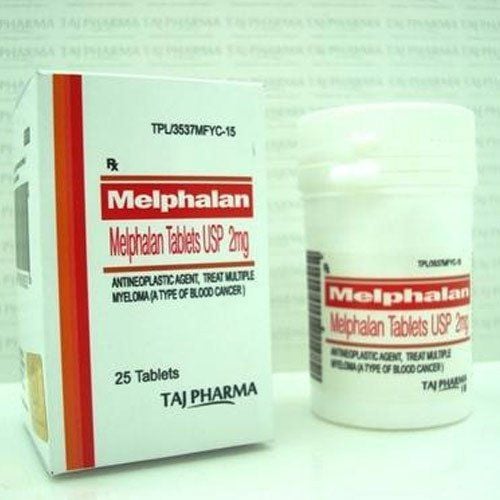This is an automatically translated article.
The article was consulted with Dr. To Kim Sang - Oncology Center - Central Park International General Hospital.Once a neuroblastoma is diagnosed, doctors will try to find out if the tumor has spread, and if so, to what stage. Neuroblastoma stages are a way of describing cancer such as where the tumor is located, where it has invaded, and if it affects other parts of the body. The stage of the cancer determines the severity of the disease and the best treatment.
1. Neuroblastoma Classification System
There are two systems used for neuroblastoma staging. The main difference between the two systems is the method used to help identify risk groups before starting treatment.The International Neuroblastoma Staging System by Risk Group (INRGSS) uses results from imaging modalities (such as CT or MRI and I123-mIBG) for treatment. The INRGSS index can be determined before starting treatment. The International Neuroblastoma Staging System (INSS) uses results from surgery instead of results from imaging studies. Currently, INRGSS is being used to stage cancer in most of the Children's Oncology Group studies instead of opting for the INSS system.
These grading systems can all be used to help ensure patients with neuroblastoma get the best treatment. If the patient has neuroblastoma and has not had surgery, the stage of the patient's cancer will be determined based on the INRGSS. If the patient has had surgery, doctors will determine the stage of the disease using one of two systems.
Neuroblastoma risk groups and stages are complex and can be confusing.

Có hai hệ thống được sử dụng cho giai đoạn u nguyên bào thần kinh
2. International Neuroblastoma Risk Group System (INRGSS)
INRGSS was developed to help determine the stage and risk group of patients with neuroblastoma before initiating treatment. The system has also helped researchers around the world compare study results to find out which treatment is best. INRGSS uses imaging tests (usually CT scan or MRI or I123-MIBG), as well as tests and biopsies to help determine the stage of the disease. Properly staging a cancer predicts how resectable the tumor can be – that is, how much of a percentage can be removed with surgery.INRGSS uses image-defined risk factors (IDRF); If these risk factors are present, surgery to remove the tumor will be more difficult. For example, a tumor that grows into a nearby vital organ or grows around important blood vessels.
INRGSS has 4 stages:
Stage L1 : The tumor is still localized in the original location. It is confined to a certain area of the body, such as the neck, chest, or abdomen. No risk factors appear on CT scans such as MRI or CT. Stage L2: The tumor has not spread beyond the original site and nearby tissues, but there are risk factors on CT imaging such as MRI or CT. Stage M: The tumor has spread to another part of the body (except MS stage tumors). MS Stage: Tumor has spread to the liver, skin, or bone marrow in patients younger than 18 months of age.

Nhóm nguy cơ u nguyên bào thần kinh quốc tế gồm có 4 giai đoạn: Giai đoạn L1, giai đoạn L2, giai đoạn M, giai đoạn MS
3. International Neuroblastoma Staging System (INSS)
Since the mid-1990s, most cancer centers have used INSS to treat neuroblastoma. This system relies on surgical results to remove the tumor. INSS cannot help doctors determine the stage of the disease before starting treatment, so INSS is not really effective for patients who do not need or cannot have surgery. The following is a brief summary of each stage according to INSS:Stage 1: The tumor is still localized to the original site. It is located on one side of the body (right or left). All visible tumors were completely removed by surgery. Nearby lymph nodes do not contain cancer cells (although nodes attached to the tumor may contain neuroblastoma cells). Stage 2A: The tumor is still confined to the original site and cannot be completely removed by surgery. Nearby lymph nodes do not contain cancer cells. Stage 2B: The tumor is still localized to the original site, and it may or may not be possible to completely remove the tumor with surgery. Nearby lymph nodes contain cancer cells. Stage 3: The tumor is inoperable, is unilateral and grows to the opposite side (mid-body line is understood as spinal line) with or without regional lymph node metastasis; or tumor located in the middle of the body with growth on both sides of the body (direct or regional lymph node metastasis). Stage 4: Cancer has spread to distant sites such as distant lymph nodes, bones, liver, skin, bone marrow, or other organs (except those in stage 4S below). Stage 4S (also called neuroblastoma-specific stage): The tumor is still localized to the original site (stages 1, 2A, or 2B), and has only spread to the skin, liver, and or bone marrow in children under one year old. Metastasis to the bone marrow is minimal (No more than 10% of the marrow cells are cancerous and imaging tests such as MIBG scans do not show cancer in the bone or bone marrow). Recurrence: this term is used to describe cancer that has come back after being treated. Cancer can come back in the original area or in another part of the body.
4. Prognostic signs

Trẻ nhỏ dưới 18 tháng có nhiều khả năng chữa khỏi hơn trẻ lớn
Age of the patient: Younger children (under 12-18 months) are more likely to be cured than older children. Tumor Histology: Tumor histology is based on how neuroblastoma cells look under a microscope. Tumors containing more normal-looking cells and tissues tend to have a better prognosis and are thought to have favorable histology. Tumors whose cells and tissues look more abnormal under the microscope tend to have a poorer prognosis and are thought to have unfavorable histology. Tumor cell polyploidy: The amount of DNA in each cell, known as ploidy or DNA index, can be measured with special laboratory tests. Neuroblastoma cells with the same amount of DNA as normal cells (DNA index of 1) are classified as diploid. Cells with an increased amount of DNA (DNA index higher than 1) are called redundant diploid (hyperdiploid). Neuroblastoma cells with more DNA have a better prognostic marker, especially for children under 2 years of age. Tumor polyploidy is only important for children under 18 months of age. MYCN gene status: MYCN is an oncogene (oncogene), a gene that helps regulate cell growth. Changes in genes that cause cancer can cause cells to grow and divide too quickly, as with cancer cells. Neuroblastomas that have too many copies (amplifications) of the MYCN gene tend to grow quickly and can be more difficult to treat. Chromosomal alterations: Tumor cells that are missing certain parts of chromosome 1 or 11 (known as deletions 1p or 11q) may predict a less favorable prognosis. Having an extra portion of chromosome 17 (increased 17q) is also associated with a worse prognosis. Neurotrophin (nerve growth factor) receptors: These are receptors on the surface of normal neurons and on some neuroblastoma cells. These receptors allow cells to recognize neurotrophin, a hormone-like chemical, and help nerve cells grow. Neuroblastomas with high levels of certain neurotrophin receptors, especially if there are many nerve growth factor receptors called TrkA, may have a better prognosis. Serum concentrations of some substances can be used to help predict prognosis.
Neuroblastoma cells release ferritin (a chemical important in the body's normal iron metabolism) into the bloodstream. Patients with high ferritin levels tend to have a worse prognosis. NSE and lactate dehydrogenase (LDH) are produced by several types of normal cells as well as neuroblastoma cells. Elevated blood levels of NSE and LDH are often specific for neuroblastoma. A substance on the surface of many nerve cells called GD2 is often found in elevated blood levels in patients with neuroblastoma. Although the usefulness of GD2 in predicting prognosis is unknown, it may play a more important role in the treatment of neuroblastoma in the future.
Please dial HOTLINE for more information or register for an appointment HERE. Download MyVinmec app to make appointments faster and to manage your bookings easily.
The article references the source: cancer.org












